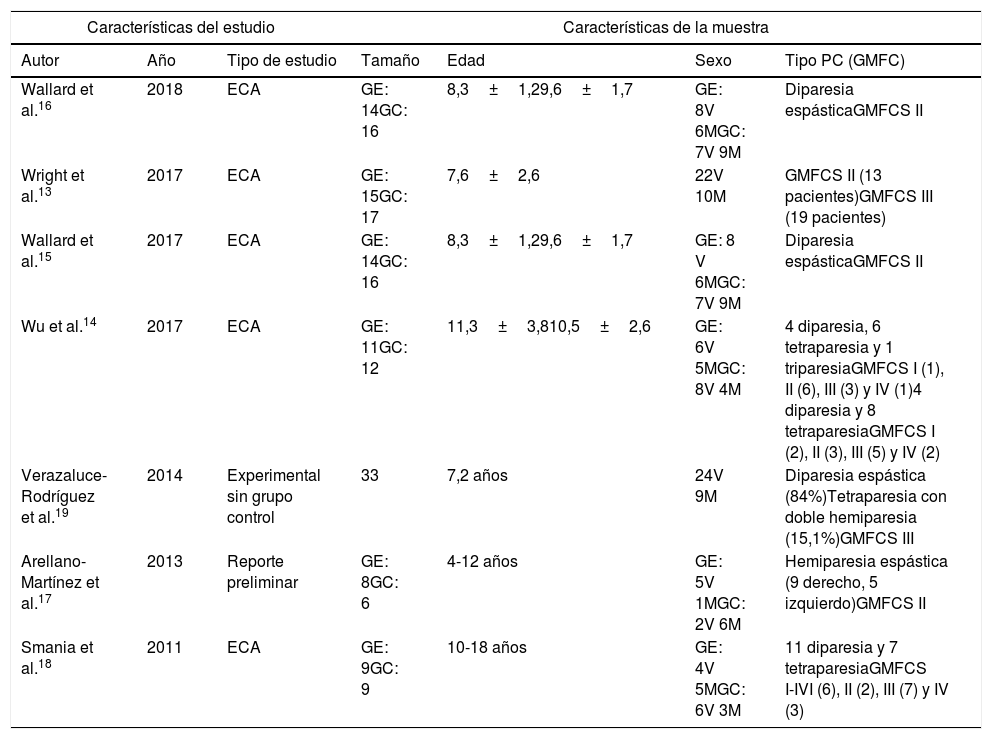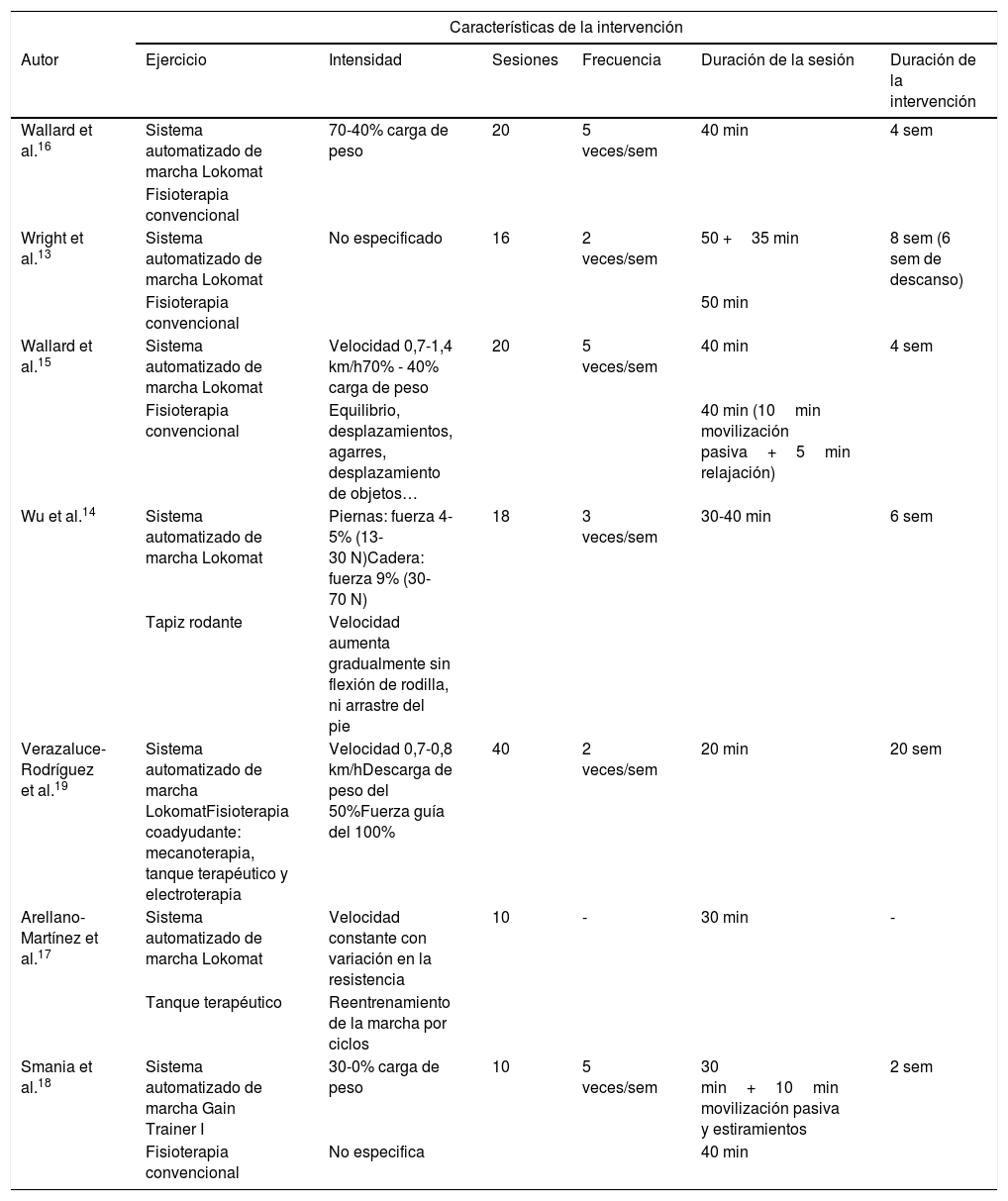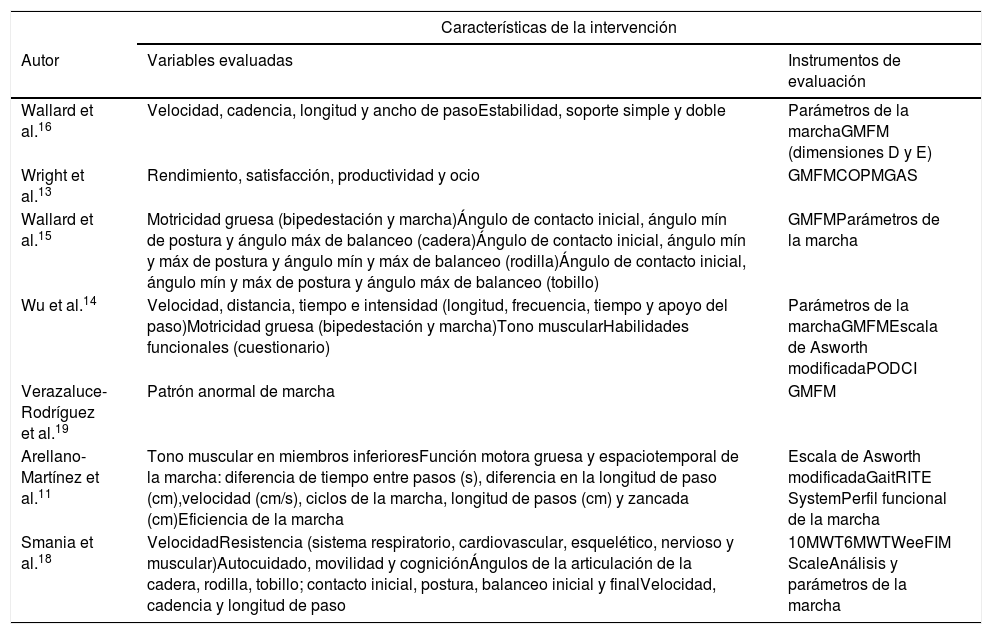La parálisis cerebral se define como un grupo de trastornos que causan limitación de la actividad y a la que se atribuyen trastornos no progresivos en el desarrollo del cerebro fetal o infantil que afectan al ámbito cognitivo y motor. La capacidad de caminar es una prioridad para estos niños y sus padres, por lo que el entrenamiento de marcha robótica se ha convertido en un enfoque terapéutico para abordar esta demanda. El objetivo principal es analizar la evidencia científica sobre el efecto del entrenamiento de marcha robótica en niños con parálisis cerebral.
Material y métodosSe ha realizado una revisión sistemática siguiendo la normativa PRISMA en las bases de datos Pubmed, Biblioteca Virtual en Salud, Cochrane Library, EBSCO y Web Of Science. Además, se consultaron algunas referencias de artículos incluidos, seleccionando ensayos clínicos aleatorizados. Para valorar el riesgo de sesgo se utilizó la herramienta propuesta por Cochrane.
ResultadosSe seleccionaron un total de 7 estudios. Los resultados muestran mejoras en el perfil funcional de la marcha, el equilibrio y el tono muscular. Las variables más utilizadas fueron los diferentes parámetros del patrón de marcha y los ángulos formados por las articulaciones durante las diferentes fases. Además, los instrumentos de evaluación más usados fueron el análisis funcional de la marcha y la medición de la función motora gruesa.
ConclusionesEl entrenamiento de marcha robótica mejora principalmente la bipedestación, la velocidad y la longitud del paso durante la marcha y el equilibrio.
Cerebral palsy is defined as a group of disorders that causes limitation of the activity to which non-progressive disorders in the development of the foetal or infant brain affecting the cognitive and motor level are attributed. The ability to walk is a priority for these children and their parents, so robotic walking training has become a therapeutic approach to address this need. The main objective of this study is to analyze the scientific evidence on the effect of robotic walking training in children with cerebral palsy.
Material and methodsA systematic review was carried out following the PRISMA rules in the databases Pubmed, Biblioteca Virtual en Salud, Cochrane Library, EBSCO and Web Of Science. In addition, some references of included articles were consulted, selecting randomized clinical trials. To assess the risk of bias, the tool proposed by Cochrane was used.
ResultsA total of 7 studies were selected. The results show improvements in the functional profile of walking, balance and muscle tone. The variables most used were the different parameters of the walking pattern and the angles formed by the joints during the different phases. In addition, the most used assessment instruments were functional analysis of gait and measurement of gross motor function.
ConclusionsRobotic gait training mainly improves standing, speed and step length during gait and balance.
Article
Si ya tiene sus datos de acceso, clique aquí.
Si olvidó su clave de acceso puede recuperarla clicando aquí y seleccionando la opción "He olvidado mi contraseña".











